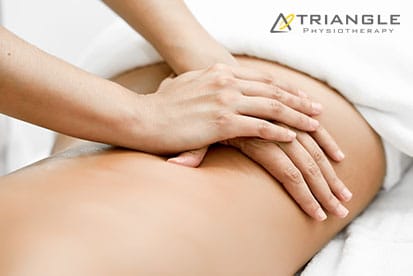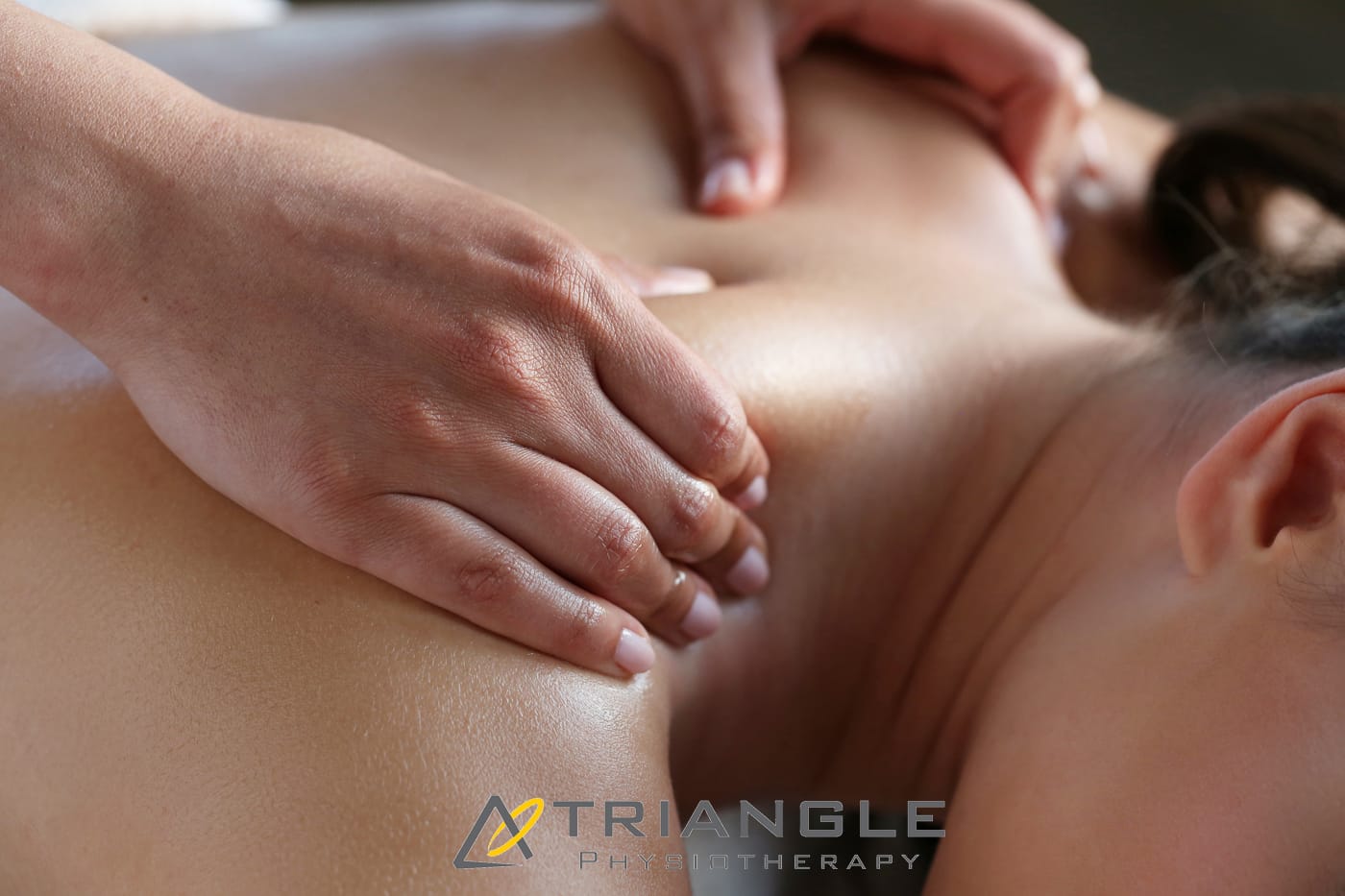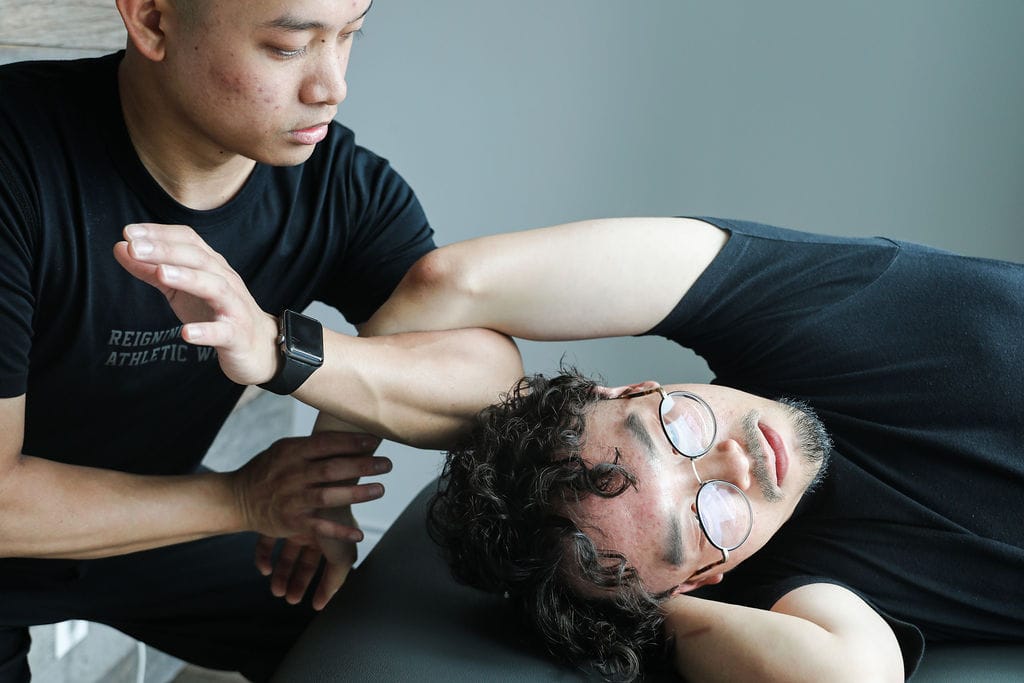Massage Therapy has Many Stress-Relieving Benefits.
In today’s fast-paced world, stress has become a common issue for many people. Whether it’s work-related pressure, personal challenges, or the general hustle and bustle of daily life, stress can have a significant impact on both physical and mental health. One effective way to combat stress is through massage therapy.
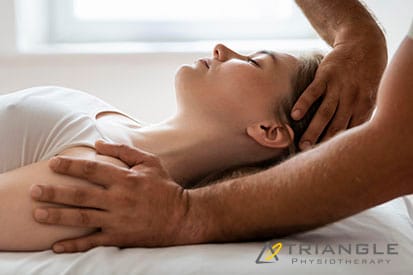
Here are three ways massage therapy can help reduce stress:
1. Physical Relaxation
One of the most immediate benefits of massage therapy is physical relaxation. Massage helps to relax tense muscles, reduce pain, and improve circulation. This physical relaxation can alleviate stress-related muscle tension, which is a common physical manifestation of stress. When the body is relaxed, it sends signals to the brain that help to reduce overall stress levels.
Massage techniques such as Swedish massage, deep tissue massage, and hot stone massage are particularly effective at promoting muscle relaxation. These techniques involve kneading, pressing, and rubbing the muscles to release tension and knots. As the muscles relax, blood flow improves, which helps to deliver oxygen and nutrients to tissues while removing toxins. This not only alleviates physical discomfort but also promotes a sense of well-being and relaxation.

2. Reduction of Stress Hormones
Massage therapy can also help regulate the body’s stress response by affecting hormone levels. Studies have shown that massage therapy can lower the levels of cortisol, a hormone that the body releases in response to stress. High levels of cortisol are associated with various negative health effects, including anxiety, depression, and sleep disturbances.
In addition to lowering cortisol levels, massage therapy can increase the production of serotonin and dopamine. These neurotransmitters play key roles in mood regulation and overall feelings of happiness and well-being. Increased levels of serotonin and dopamine can help combat the effects of stress, leading to a more positive outlook and improved mental health.
3. Improved Sleep Quality
Stress often interferes with sleep, leading to a cycle of sleep deprivation and increased stress. Massage therapy can help break this cycle by promoting relaxation and reducing insomnia. Regular massage sessions have been shown to improve sleep quality by enhancing the body’s production of serotonin and melatonin, hormones that regulate sleep.
Better sleep allows the body and mind to recover from the daily stresses and challenges, leading to improved overall mental health and resilience against stressors. With regular massage therapy, individuals can experience more restful and restorative sleep, which in turn helps to reduce stress and improve their overall quality of life.
Click here to book an appointment with a massage therapist at one of our eight locations.
- Massage Therapy Etobicoke – Triangle Physiotherapy Etobicoke
- Oakville Massage Therapy Clinic – Triangle Physiotherapy Oakville
- Massage Therapy North York – Triangle Physiotherapy North York
- Mississauga Massage Therapy Clinics – Triangle Physiotherapy Mississauga
- Downtown Massage Therapy Clinics – Triangle Physiotherapy King West
- Uptown Massage Therapy Clinics – Triangle Physiotherapy Lawrence Park
- Massage Therapy Clinic Downtown Toronto – Triangle Physiotherapy Queens Quay
- Massage Therapy Clinics Mississauga – Triangle Physiotherapy Erin Mills
Massage therapy is an excellent way to reduce stress and improve overall well-being. If you’re seeking complementary treatments like massage therapy or physiotherapy in Etobicoke, Oakville, North York, Toronto, Lawrence Park, Queens Quay, Erin Mills, Mississauga, or Liberty Village, experienced physiotherapists are available to help you achieve better health and relaxation.
Massage therapy involves the manipulation of the body’s soft tissues, including muscles, connective tissues, tendons, ligaments, and skin, to improve a person’s health and well-being. This practice has been used for thousands of years across various cultures and is widely recognized for its numerous benefits.
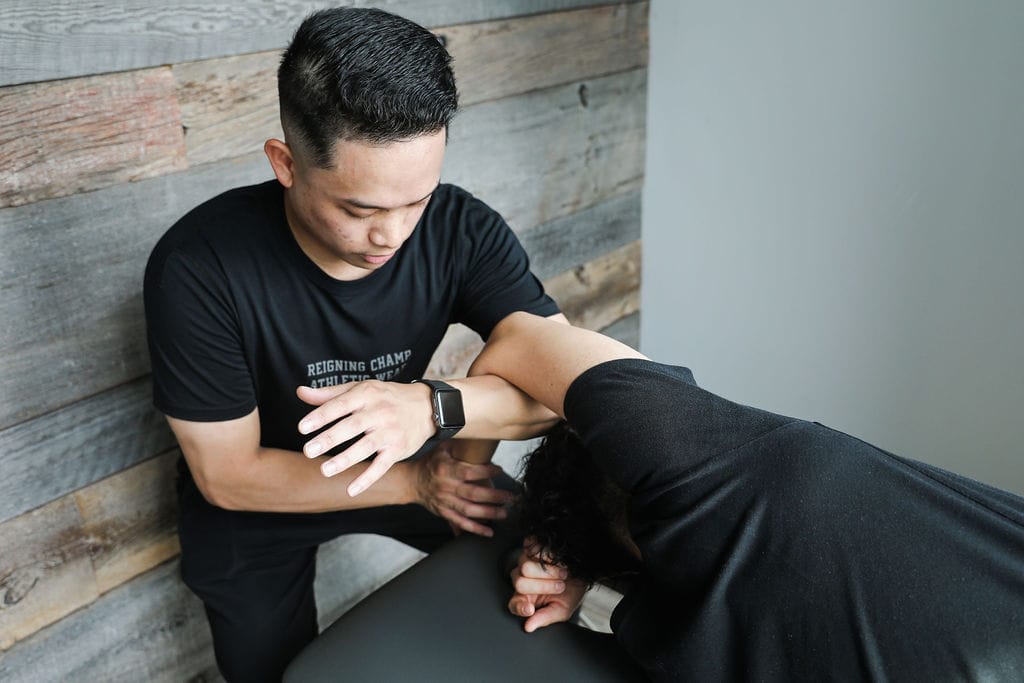
What is Deep Tissue Massage?
Deep tissue massage is a type of massage therapy that focuses on the deeper layers of muscle and connective tissue. It is especially beneficial for individuals who suffer from chronic pain, muscle tension, or are recovering from an injury. This technique involves the use of slow, deliberate strokes and deep pressure to target specific areas of tension and tightness.
What is Swedish Massage?
Swedish massage is a popular and widely practiced form of massage therapy known for its gentle and relaxing techniques. It focuses on promoting overall relaxation, improving blood flow, and relieving muscle tension. Swedish massage is an excellent choice for those new to massage therapy or looking for a general wellness treatment.
What is the difference between Deep Tissue Massage and Swedish Massage?
Swedish Massage:
- Relaxation: Promotes overall relaxation and reduces stress.
- Circulation: Enhances blood flow and oxygen delivery.
- Muscle Relief: Eases muscle tension and soreness.
- Flexibility: Improves range of motion and flexibility.
- General Wellness: Suitable for maintaining overall health and well-being.
Deep Tissue Massage:
- Pain Relief: Addresses chronic pain and conditions such as lower back pain and neck pain.
- Muscle Tension: Releases deeper layers of muscle tension and knots.
- Injury Recovery: Aids in rehabilitation from injuries by promoting healing and reducing scar tissue.
- Posture Improvement: Corrects muscle imbalances and postural issues.
- Specific Problem Areas: Focuses on targeted areas rather than the whole body.
What are some other types of Massage therapy?
1. Sports Massage
- Focus: Enhances athletic performance and recovery.
- Techniques: Combines Swedish massage, deep tissue, and stretching techniques.
- Benefits: Reduces muscle soreness, improves flexibility, and prevents injuries.
- Ideal For: Athletes and active individuals.
2. Trigger Point Therapy
- Focus: Relieves pain by targeting specific trigger points.
- Techniques: Applies direct pressure to trigger points (knots in the muscles).
- Benefits: Reduces localized pain and referred pain in other areas.
- Ideal For: People with chronic pain and tension.
3. Shiatsu
- Focus: Balances the body’s energy flow.
- Techniques: Uses finger pressure on specific points along the body’s meridians.
- Benefits: Promotes relaxation, reduces stress, and improves energy flow.
- Ideal For: Individuals seeking holistic health benefits and stress relief.
4. Reflexology
- Focus: Stimulates reflex points on the feet, hands, or ears.
- Techniques: Applies pressure to specific points believed to correspond to other body parts.
- Benefits: Enhances overall health and well-being, relieves stress, and improves circulation.
- Ideal For: People looking for non-invasive therapy and overall wellness.
5. Prenatal Massage
- Focus: Supports the health and well-being of pregnant women.
- Techniques: Gentle techniques to relieve pregnancy-related discomfort.
- Benefits: Reduces back pain, improves sleep, and decreases stress and anxiety.
- Ideal For: Pregnant women experiencing discomfort and seeking relaxation.
6. Hot Stone Massage
- Focus: Deep relaxation and muscle tension relief.
- Techniques: Uses heated stones placed on the body and integrated into massage strokes.
- Benefits: Enhances relaxation, improves circulation, and alleviates muscle stiffness.
- Ideal For: Individuals looking for a deeply relaxing experience.
7. Thai Massage
- Focus: Combines acupressure, stretching, and assisted yoga postures.
- Techniques: Performed on a mat, involves rhythmic pressure and stretching.
- Benefits: Increases flexibility, relieves muscle tension, and boosts energy levels.
- Ideal For: People seeking an active and invigorating massage experience.
8. Lymphatic Drainage Massage
- Focus: Stimulates the lymphatic system to remove toxins and waste.
- Techniques: Gentle, rhythmic strokes and light pressure.
- Benefits: Reduces swelling, improves immune function, and detoxifies the body.
- Ideal For: Individuals with lymphedema, post-surgery recovery, or those wanting detoxification.
9. Craniosacral Therapy
- Focus: Works on the craniosacral system to relieve tension.
- Techniques: Gentle touch to manipulate the skull and sacrum.
- Benefits: Reduces stress, alleviates pain, and improves nervous system function.
- Ideal For: People with chronic pain, headaches, or stress-related conditions.
10. Aromatherapy Massage
- Focus: Enhances the massage experience using essential oils.
- Techniques: Combines Swedish or other massage techniques with aromatherapy.
- Benefits: Promotes relaxation, reduces stress, and improves mood.
- Ideal For: Individuals seeking relaxation and mood enhancement.
Click here to book an appointment with a massage therapist at one of our eight locations.
- Massage therapy Etobicoke – Triangle Physiotherapy Etobicoke
- Oakville Massage Therapy Clinic – Triangle Physiotherapy Oakville
- Massage Therapy North York – Triangle Physiotherapy North York
- Mississauga Massage Therapy Clinics – Triangle Physiotherapy Mississauga
- Downtown Massage Therapy Clinics – Triangle Physiotherapy King West
- Uptown Massage Therapy Clinics – Triangle Physiotherapy Lawrence Park
- Massage Therapy Clinic Downtown Toronto – Triangle Physiotherapy Queens Quay
- RMT Mississauga – Triangle Physiotherapy Erin Mills
Whether you choose deep tissue or Swedish massage, both can offer significant benefits for relaxation and pain relief. If you’re looking for expert advice on which massage therapy is best for you, consider visiting a physiotherapy clinic in Etobicoke, Oakville, North York, Toronto, Lawrence Park, Queens Quay, Erin Mills, Mississauga, or Liberty Village. Professional physiotherapists and massage therapists in these areas can provide the right treatment to help you achieve your wellness goals.
The holidays are around the corner, and so is all the pressure and stress that can tag along with them. Holiday stress is hard to avoid between work, family responsibilities, and a schedule packed with social commitments — but it’s easier to manage stress with massage therapy. Massage therapy can help you destress, unwind, and be ready to enjoy the holiday season.
How can massage therapy help with relieving holiday season stress?
Here are some ways in which massage can help alleviate holiday stress:
- Relaxation: Massage is known for its ability to induce relaxation. The physical manipulation of muscles helps release tension and promotes a sense of calm. This can be particularly beneficial during the hectic holiday season when stress levels tend to be higher.
- Reduced Muscle Tension: The physical demands of holiday preparations, such as shopping, cooking, and decorating, can lead to muscle tension and discomfort. Massage can target specific areas of tension, helping to release tight muscles and improve flexibility.
- Improved Sleep: The holiday season can disrupt regular sleep patterns due to increased activities and stress. Massage has been shown to improve sleep quality by promoting relaxation and reducing anxiety. Better sleep can contribute to overall well-being.
- Stress Reduction: Massage therapy has been linked to a reduction in stress hormones such as cortisol. Regular massage sessions can help regulate stress levels and promote a sense of well-being.
- Enhanced Mood: Massage stimulates the release of endorphins, the body’s natural feel-good chemicals. This can help improve mood and reduce feelings of anxiety or depression, which can be exacerbated during the holiday season.
- Increased Body Awareness: Massage encourages mindfulness and awareness of the body. Focusing on the present moment can help individuals let go of worries about the past or future, promoting a sense of peace and tranquility.
- Improved Circulation: The physical manipulation of muscles during massage promotes better blood circulation. Improved circulation can help reduce inflammation, support the immune system, and contribute to overall health.
- Time for Self-Care: The holiday season often involves taking care of others, which can leave little time for self-care. Scheduling a massage provides dedicated time for self-nurturing, allowing individuals to prioritize their well-being.
- Human Connection: Massage therapy involves human touch, which can have a positive impact on emotional well-being. The connection with a massage therapist can provide a sense of comfort and support.
- Mind-Body Connection: Massage emphasizes the interconnectedness of the mind and body. Taking the time for a massage can help individuals reconnect with their bodies, fostering a holistic approach to health.

How do I book an appointment with a massage therapist near me?
Click HERE to book an appointment with a physiotherapist or chiropractor at one of our eight locations.
- Massage Therapy Etobicoke – Triangle Physiotherapy Etobicoke
- Oakville Massage Therapy Clinic – Triangle Physiotherapy Oakville
- RMT North York – Triangle Physiotherapy North York
- Mississauga Massage Therapy Clinics – Triangle Physiotherapy Mississauga
- Downtown RMT Clinics – Triangle Physiotherapy King West
- Massage Therapy Yonge and Eglinton – Triangle Physiotherapy Lawrence Park
- RMT Downtown Toronto – Triangle Physiotherapy Queens Quay
- RMT Mississauga – Triangle Physiotherapy Erin Mills
Massage therapy is a great way to relieve stress during the holiday season, reduce muscle tension, and promote relaxation. If you’re looking for professional physiotherapy services to complement your massage therapy and enhance your overall well-being, consider clinics in physiotherapy Etobicoke, Oakville, North York, Toronto, Lawrence Park, Queens Quay, Erin Mills, Mississauga, and Liberty Village. These clinics offer expert care and personalized treatment plans to support your health and relaxation needs.
A Massage Therapist can be an integral part of your healthcare team to help you relax, reduce muscle tension, and alleviate pain or discomfort through manual manipulation of soft tissues in the body.
To find the best massage therapist near you, you can follow these steps:
- Ask for recommendations: Start by asking your friends, family members, or colleagues if they can recommend a good massage therapist they have had a positive experience with. Personal recommendations are often reliable.
- Search online: Look up “massage therapy clinics near me”, and read their reviews online.
- Check credentials and qualifications: Make sure the massage therapist is registered with the College of Massage Therapists of Ontario.
- Consider specialization and modalities: Determine the type of massage you’re interested in or any specific needs you have, such as deep tissue massage, sports massage, or prenatal massage. Some therapists specialize in certain modalities, so look for those who offer the specific type of massage you desire.
- Contact and ask questions: Reach out to the clinic you’re considering and ask them questions about their experience, training, techniques, and any other concerns you may have. This can help you assess their knowledge and determine if they are a good fit for you.
- Consider location and convenience: Take into account the location of the massage therapist’s practice. Choose someone who is conveniently located, ensuring it’s not too far from your home or workplace, making it easier to schedule and attend appointments.
- Visit the therapist’s facility: If possible, visit the therapist’s facility before booking an appointment. Assess the cleanliness, ambiance, and overall atmosphere to ensure it aligns with your preferences and promotes relaxation.
- Trust your intuition: Trust your instincts when selecting a massage therapist. If something feels off or you don’t feel comfortable during the initial interactions, it may be best to continue your search for a therapist who puts you at ease.
FAQs About Finding a Massage Therapist Near You
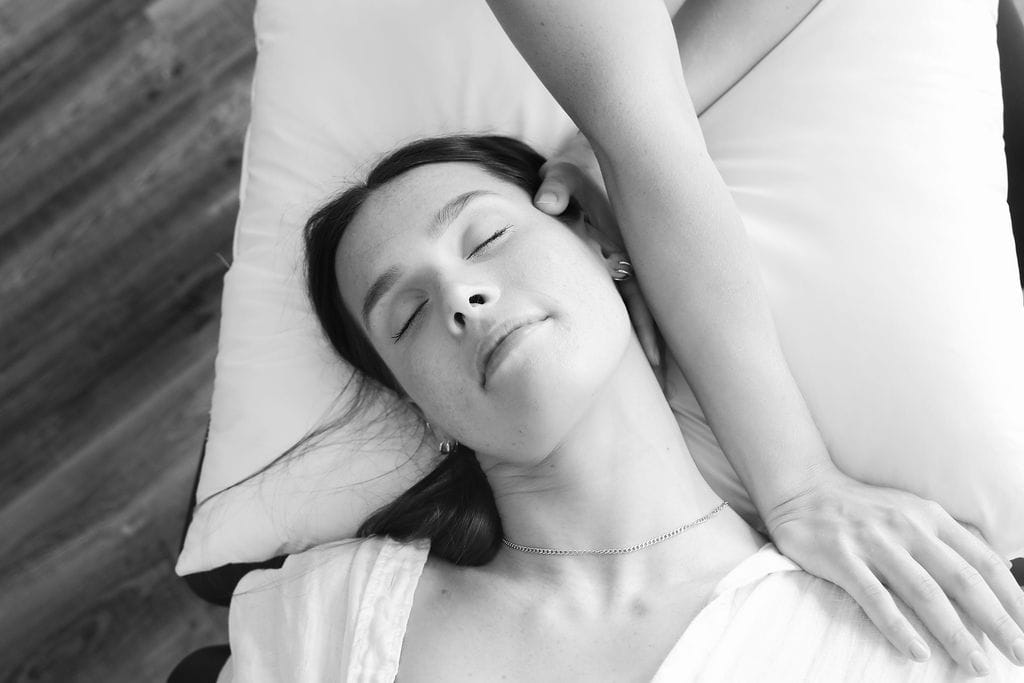
How often should I get a massage?
Regular massages can help you manage your stress and any other symptoms you may have. They can also help with pain relief, improve your flexibility and promote your overall well-being. Ideally, one session a week can help you maintain good health, but it is wise to ask your massage therapist for recommendations with regard to frequency.
What is the best duration for a massage?
Massage treatments range from 30-minute to 90-minute sessions. If you would like your entire body to be worked on, at least 60 minutes is recommended. A 30-minute session can suffice for a targeted area treatment.
Do you take off all your clothes for massage?
Most massage therapists prefer that you undress for your massage therapy session. You may request a gown if you wish but massage therapists are trained to drape their patients to maintain their privacy.
Is it rude to fall asleep during a massage?
Not at all, massage therapists are able to continue treating you even if you fall asleep. It is not rude, nor does it insult them in any way. Some might even take it as a compliment that they were able to relax you enough for you to fall asleep.
Should you talk during a massage?
As the client, you can choose to converse with your massage therapist, whenever you want. That being said, if you prefer peace and quiet and do not wish to talk during your session, feel free to let your therapist know.
A massage therapy clinic near me looks sketchy, how do I find out if it is a reputed clinic?
- Look up the clinic’s website and see if it looks respectable.
- Check for online reviews.
- Ask if the massage therapist is registered with the College of Massage Therapists of Ontario, ask for their name, and look them up on the College Register.
What is the most effective type of massage?
There are different types of massage techniques. A massage therapy treatment transmits dedication and care which can have profound effects on health and well-being by providing mental and physical relaxation.
- Relaxation Massage: A relaxation massage has a powerful effect on the nervous system that affects the whole body. It restores harmony to those who are stressed through careful manipulation of the muscles and joints.
- Deep Tissue Massage: A deep tissue massage aims to relieve chronic tension, through slow movements and deep pressure on contracted areas. A deep tissue massage provides profound relief with enduring effects in areas difficult to address with a more superficial muscle massage.
- Swedish Massage: This is the most common type of massage, characterized by long, gliding strokes, kneading, and circular movements. It aims to promote relaxation, improve circulation, and relieve muscle tension.
- Sports Massage: Primarily designed for athletes or individuals engaged in physical activities, sports massage helps prevent and treat sports-related injuries. It combines techniques from Swedish massage, deep tissue massage, and stretching to enhance performance, flexibility, and recovery.
- Hot Stone Massage: This type of massage involves placing smooth, heated stones on specific points of the body. The therapist may also use the stones to massage the body, providing a deep sense of relaxation and relieving muscle tension.
- Thai Massage: Also known as Thai yoga massage, it combines acupressure, stretching, and assisted yoga postures. The therapist uses their hands, knees, legs, and feet to apply rhythmic pressure and stretch the body, promoting flexibility and energy flow.
- Shiatsu Massage: Originating from Japan, Shiatsu massage applies finger pressure to specific points on the body to balance the body’s energy flow. It incorporates stretching and gentle joint manipulation techniques.
- Reflexology: This massage focuses on specific reflex points on the hands, feet, and ears that are believed to correspond to different organs and systems in the body. Pressure is applied to these points to promote relaxation and stimulate healing responses.
Is it rude not to tip a massage therapist?
A tip is never required at our clinics, however, it may be appreciated by your massage therapist. If you choose not to tip, by no means will it be considered rude.
However, in some settings like spas and hotel spas, it is considered a norm to tip your massage therapist.
Our More Locations
Physiotherapy Etobicoke | Physiotherapy Oakville | Physiotherapy North York | Physiotherapy Toronto | Physiotherapy Lawrence Park | Physiotherapy Mississauga | Physiotherapy Queens Quay | Physiotherapy Mississauga Erin Mills | Physiotherapy Liberty Village
How do I find a massage therapist near me?
We have 8 locations with registered massage therapists to help you. Book an Appointment today!
- RMT Etobicoke – Triangle Physiotherapy Etobicoke
- Registered Massage Therapy Oakville – Triangle Physiotherapy Oakville
- Massage Therapy North York – Triangle Physiotherapy North York
- Best RMT in Mississauga – Triangle Physiotherapy Mississauga
- RMT Downtown Toronto – Triangle Physiotherapy King West
- Uptown Toronto RMT – Triangle Physiotherapy Lawrence Park
- RMT near me in Downtown Toronto – Triangle Physiotherapy Queens Quay
- Mississauga RMT near me – Triangle Physiotherapy Erin Mills
Finding the best massage therapist involves considering factors like qualifications, experience, and the range of services offered. If you’re also looking for professional physiotherapy services to complement your massage therapy, there are excellent clinics in physiotherapy Etobicoke, Oakville, North York, Toronto, Lawrence Park, Queens Quay, Erin Mills, Mississauga, and Liberty Village. These locations provide expert care and personalized treatment plans to help you achieve overall wellness and recovery.

